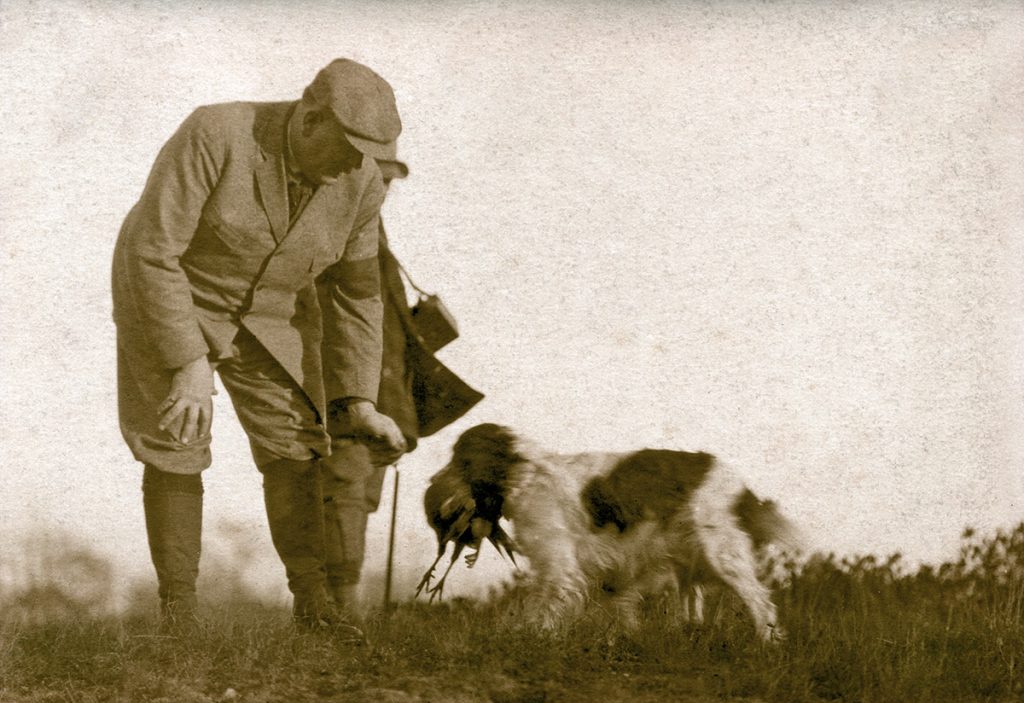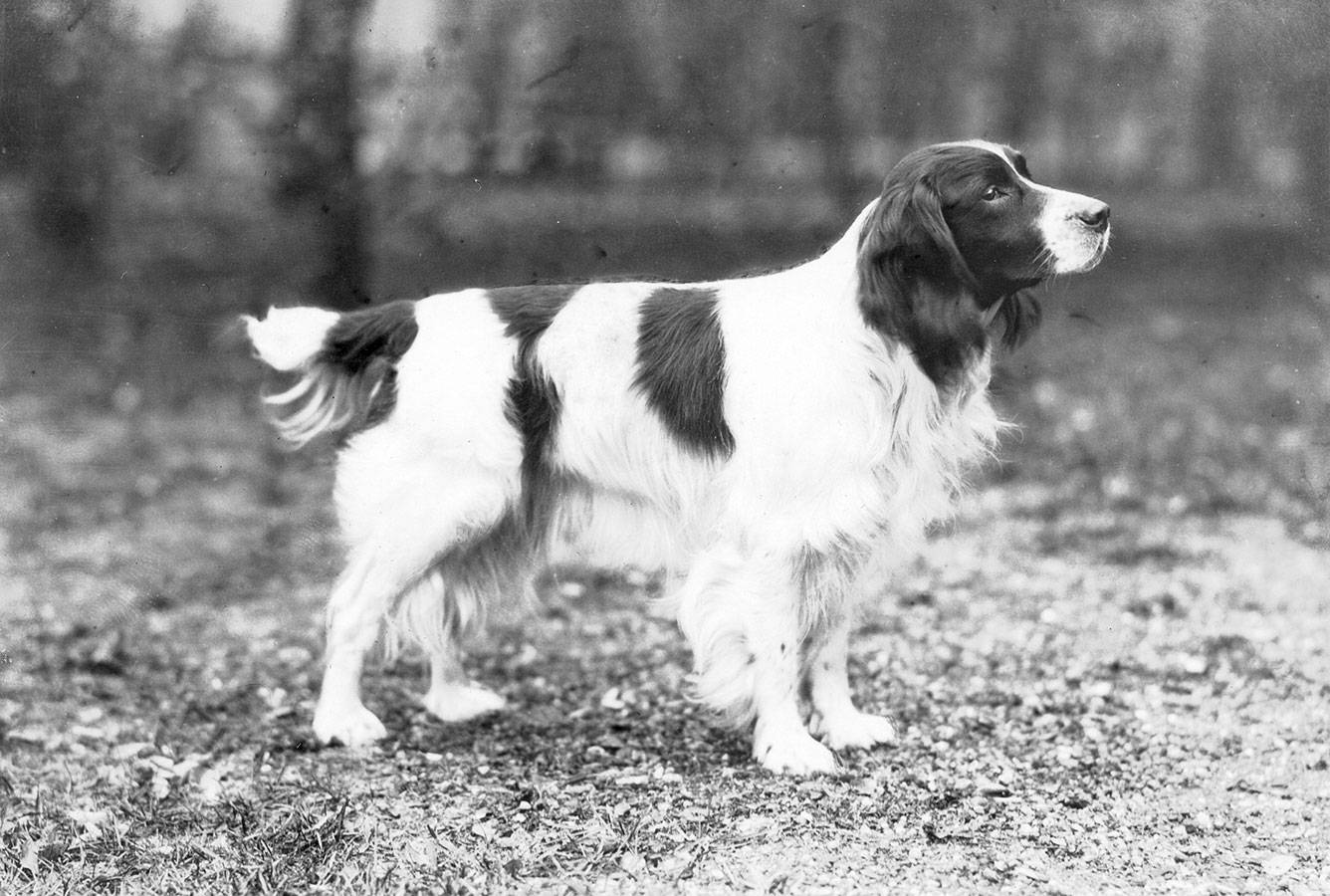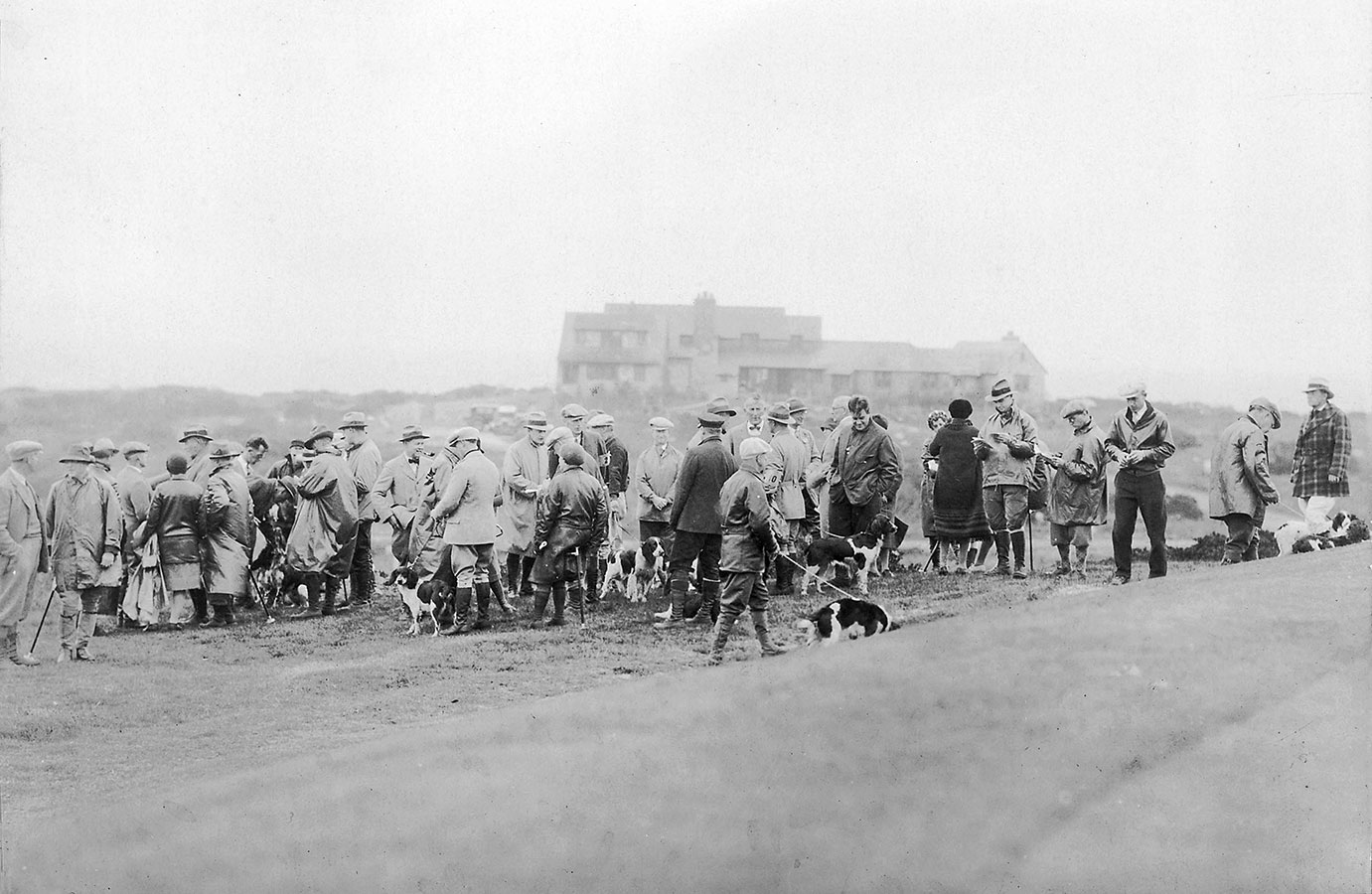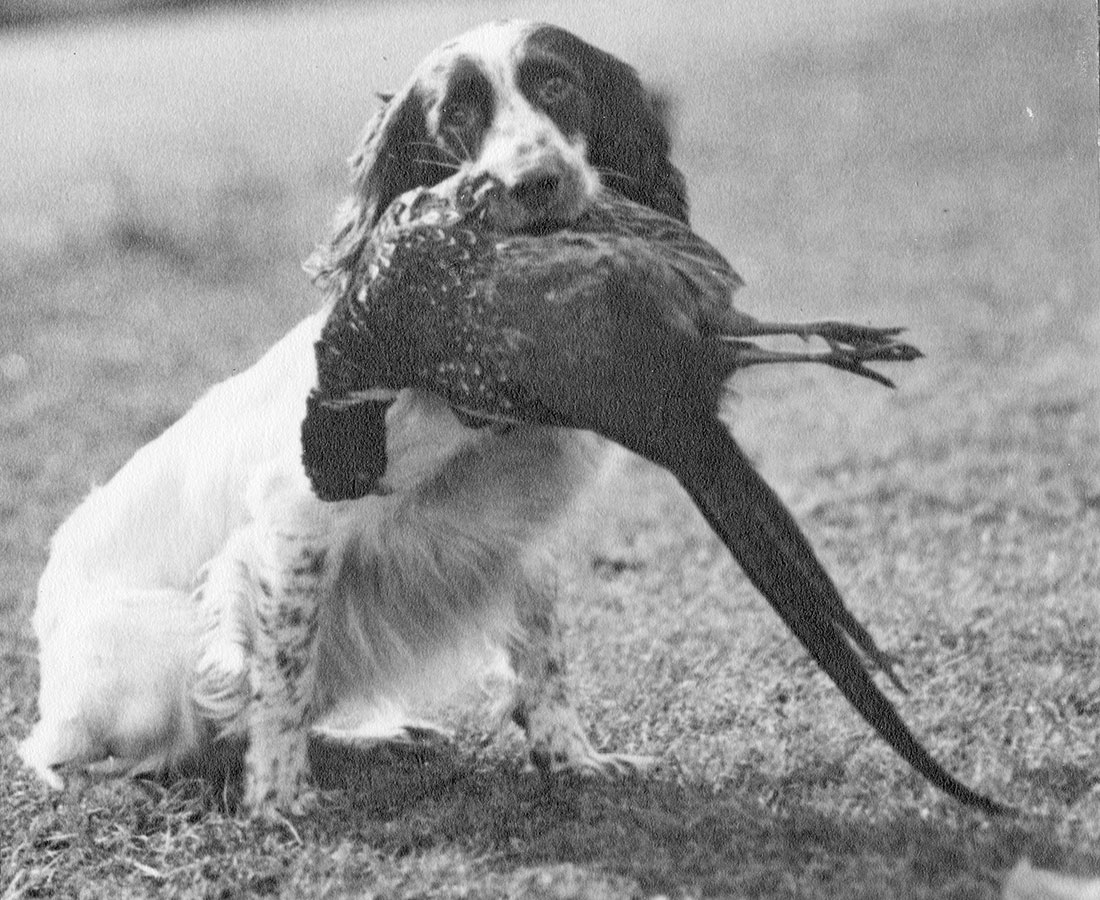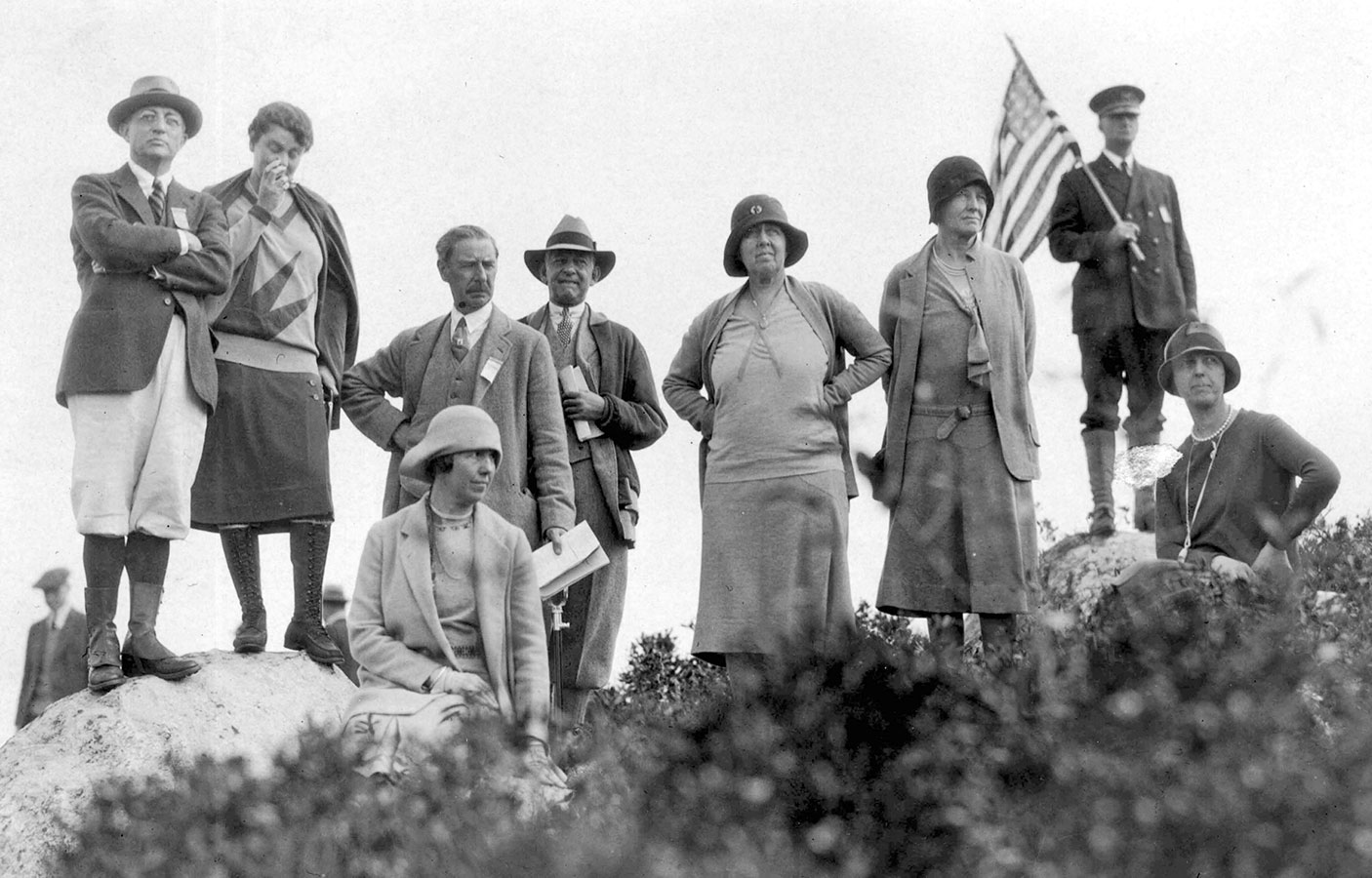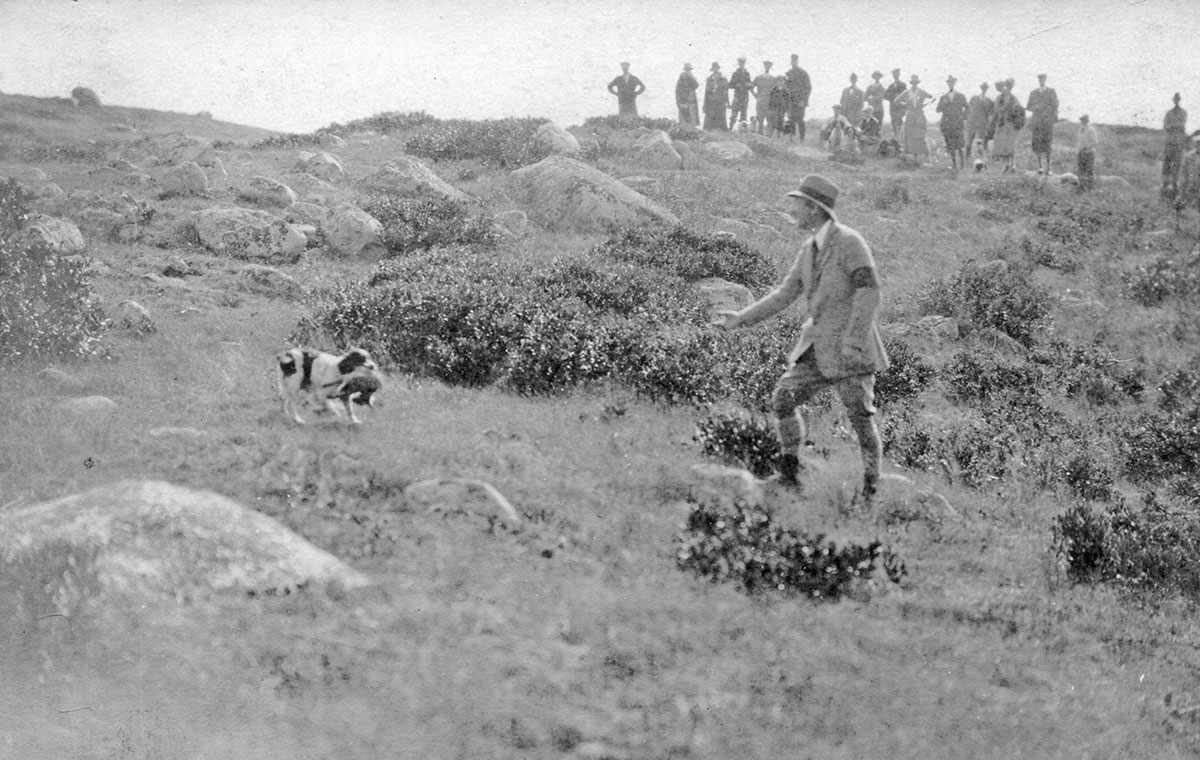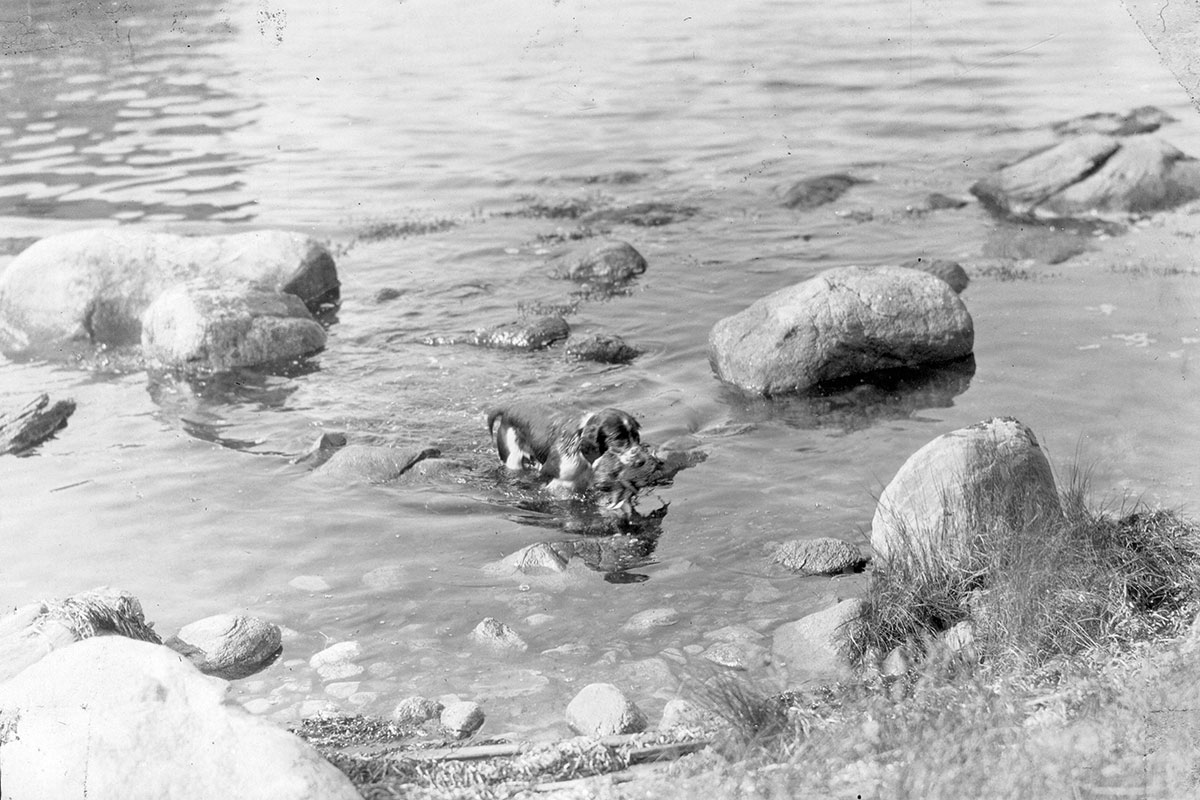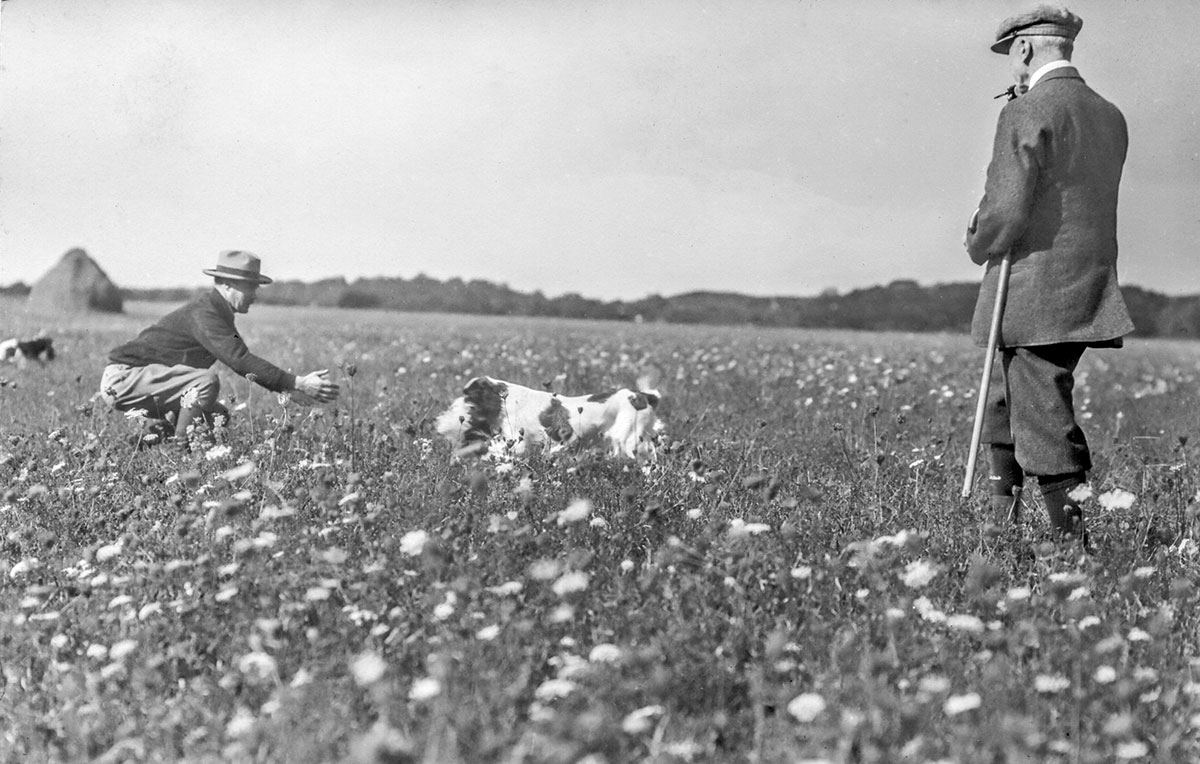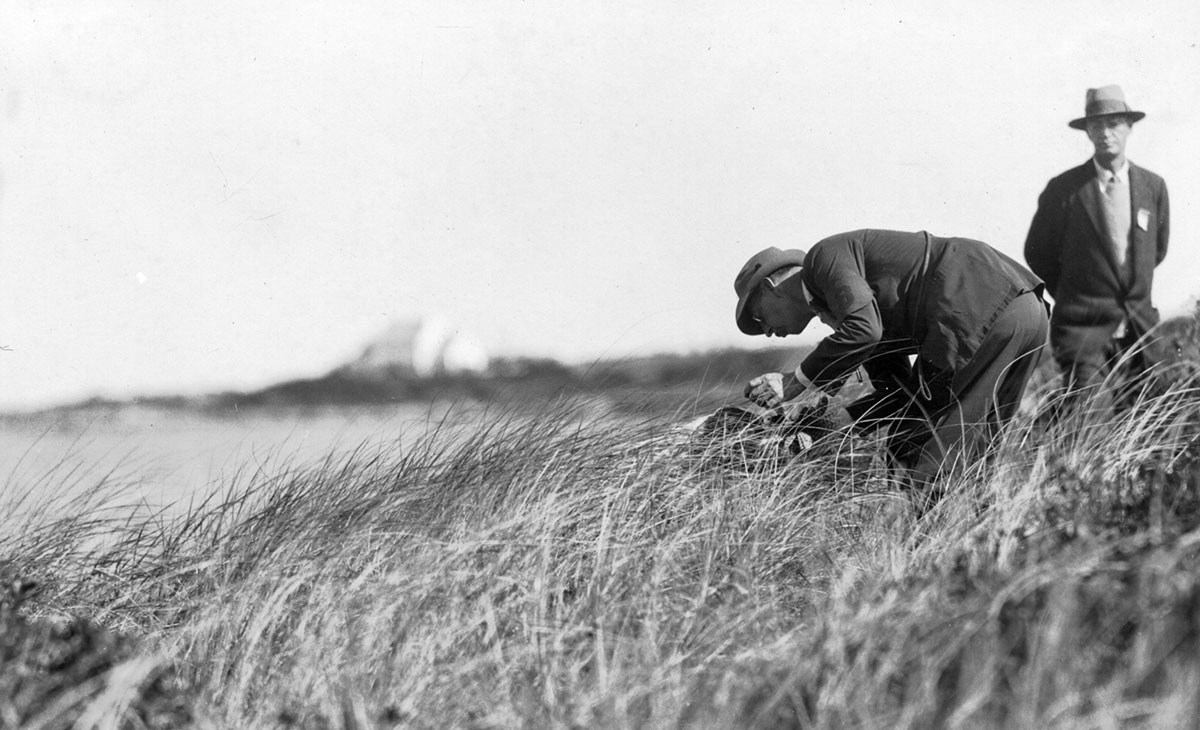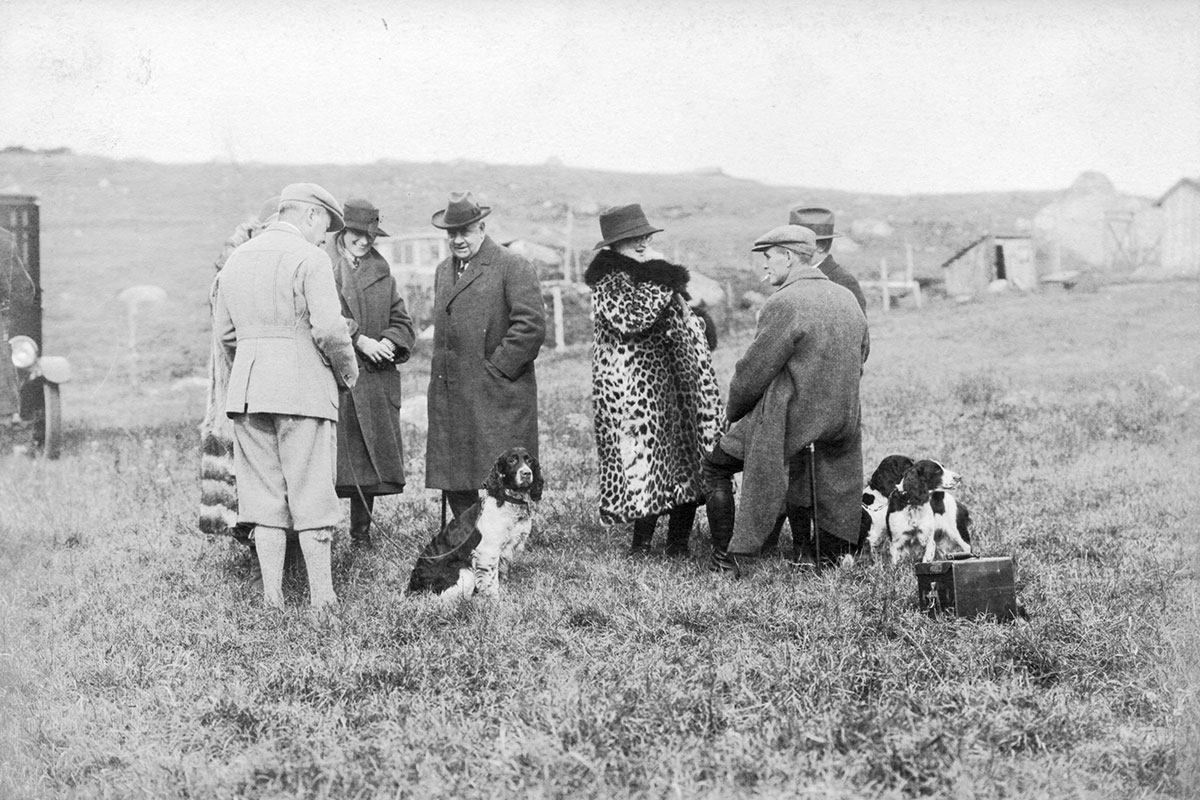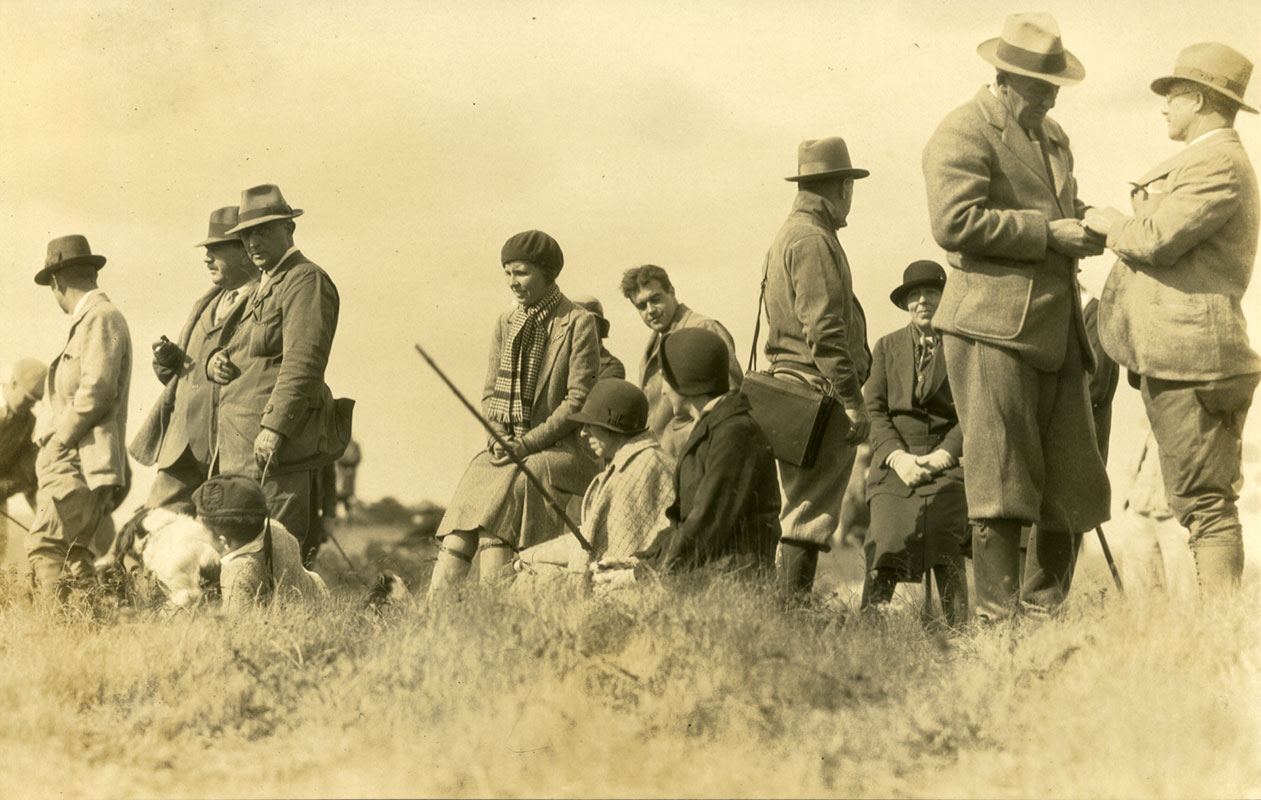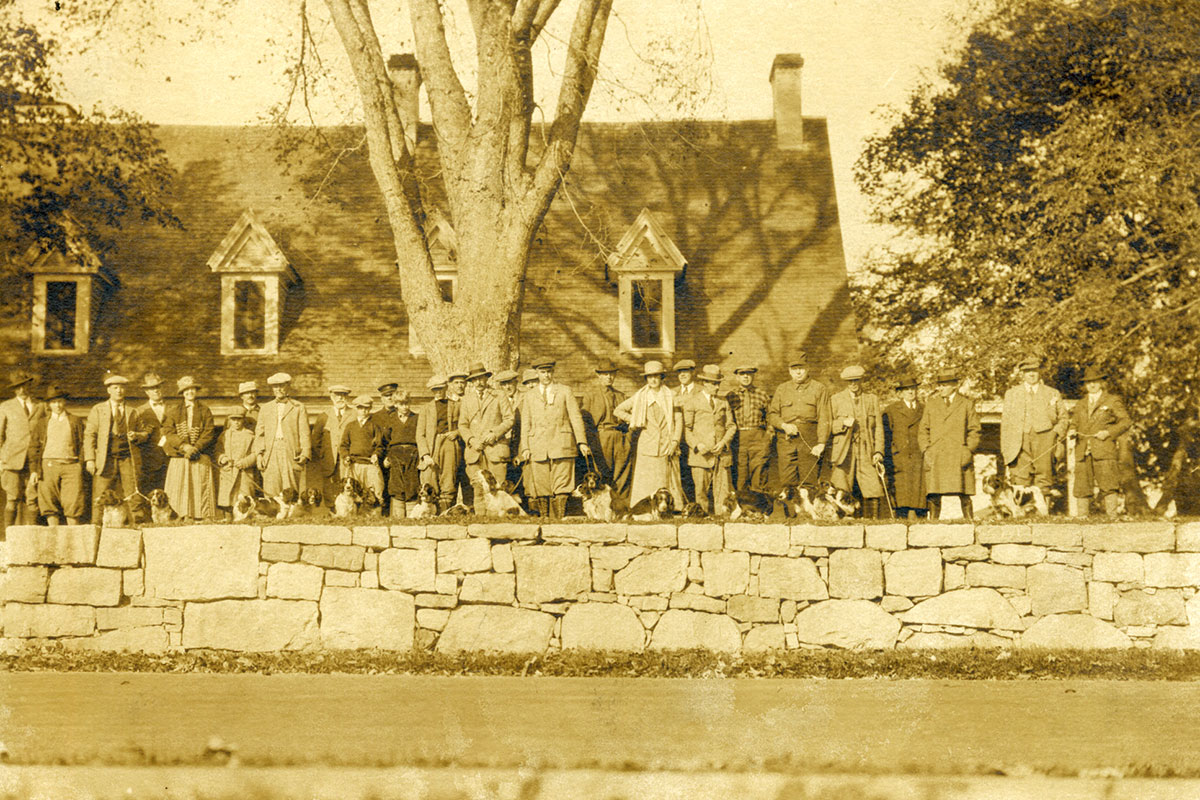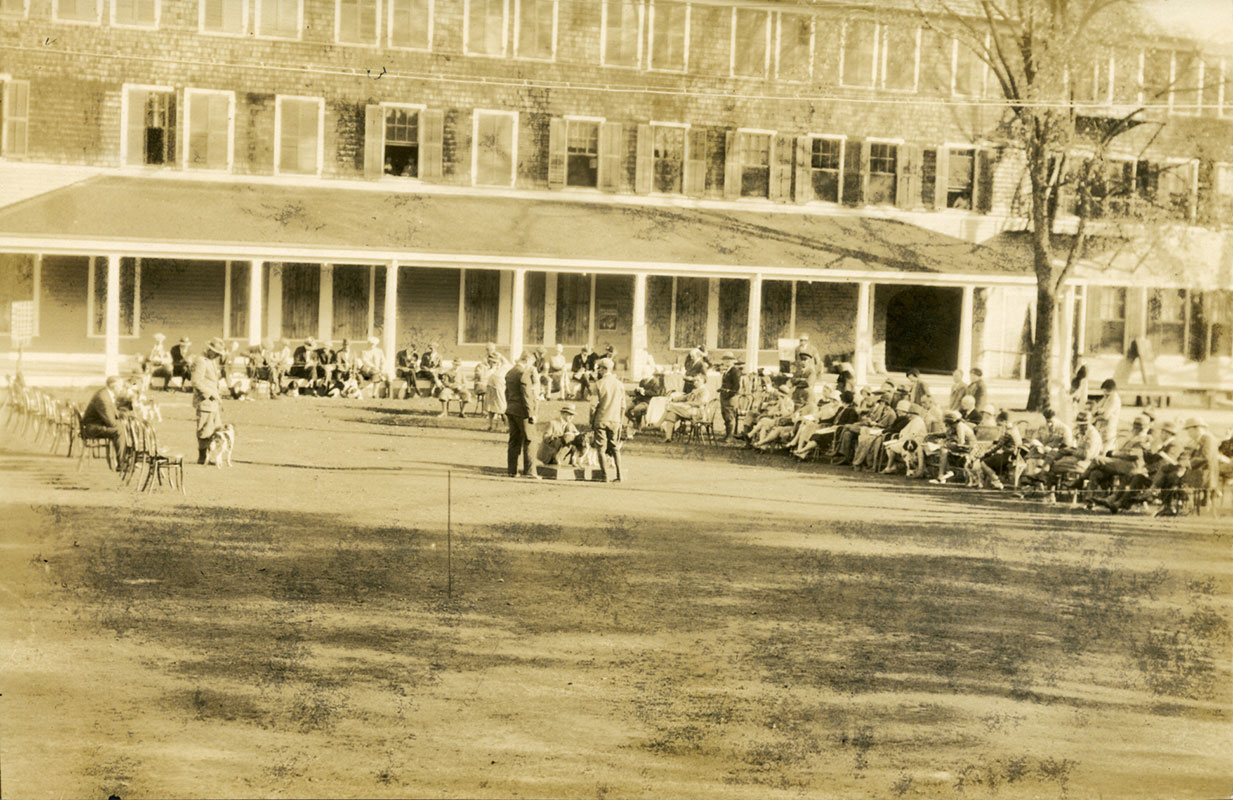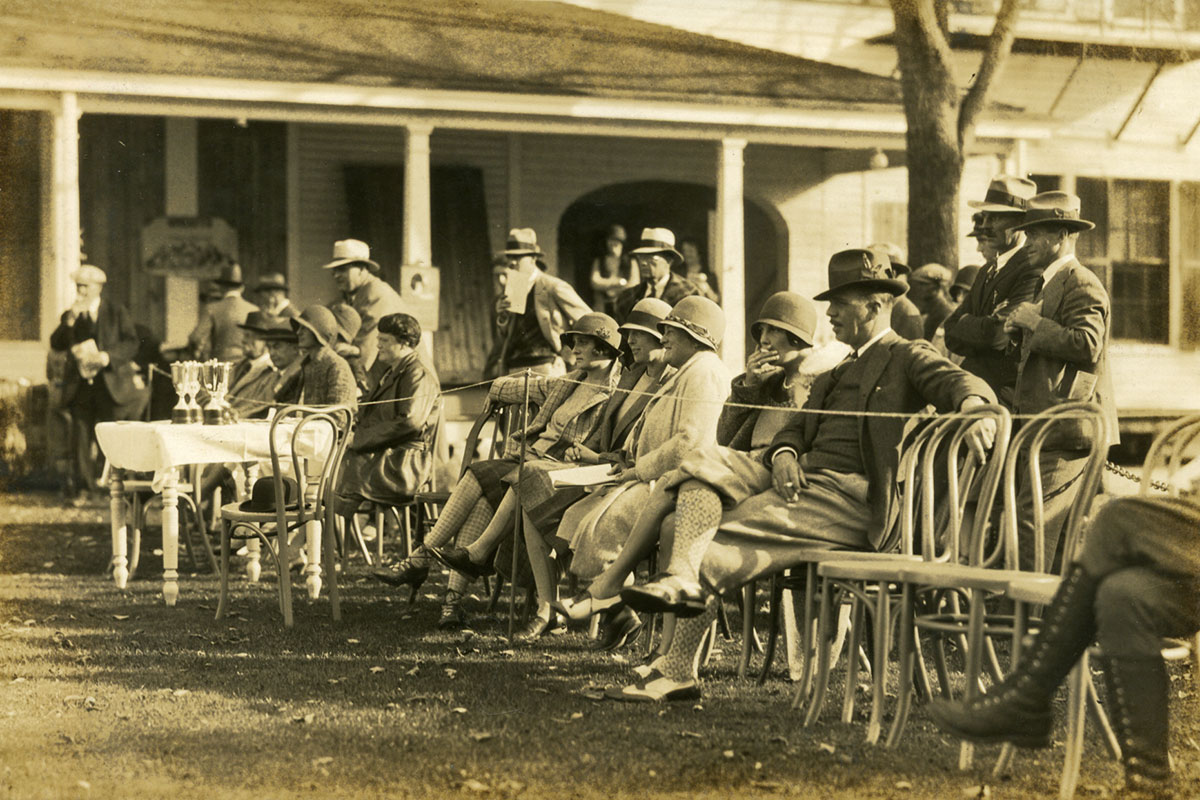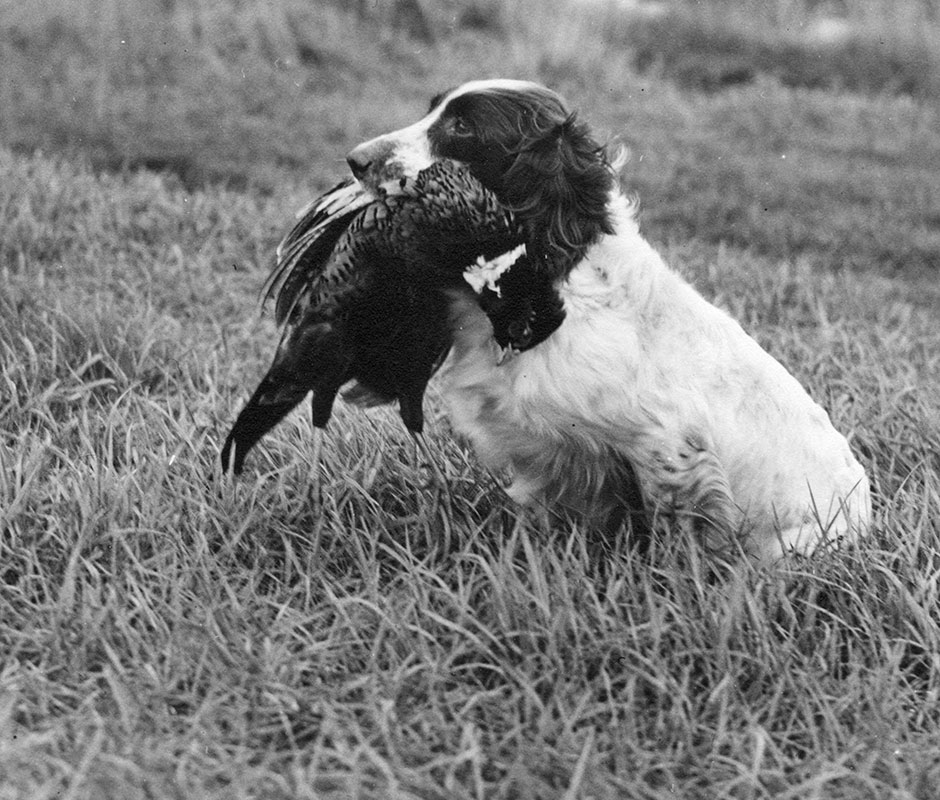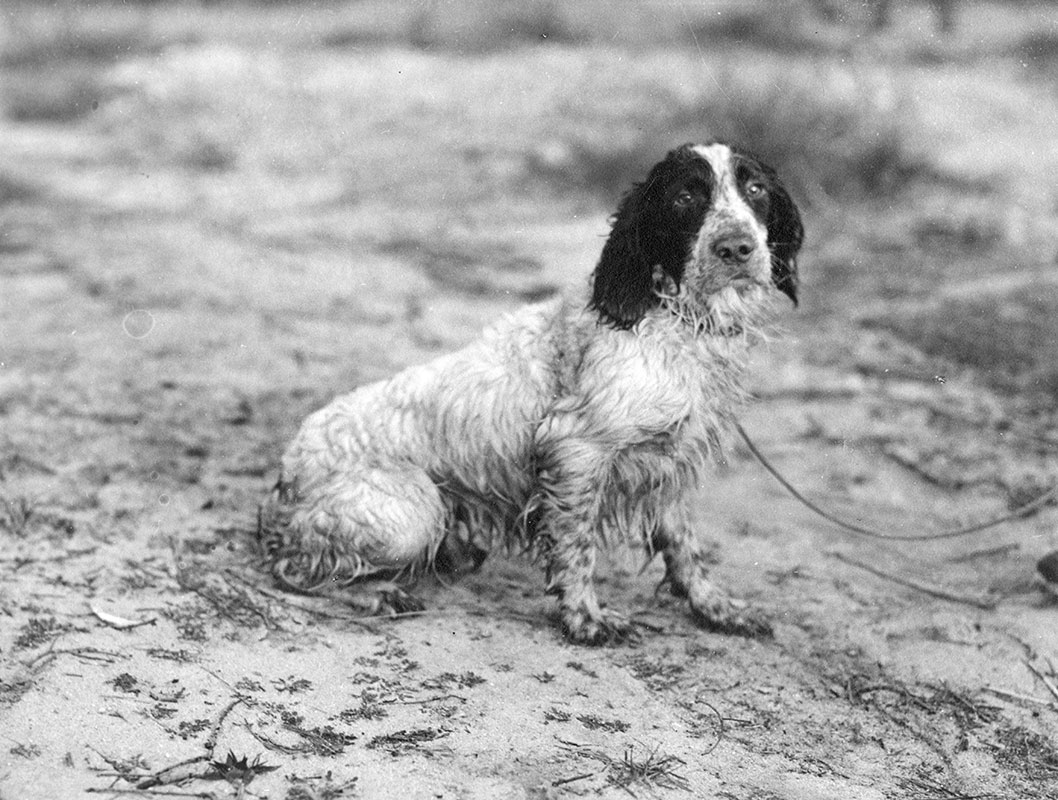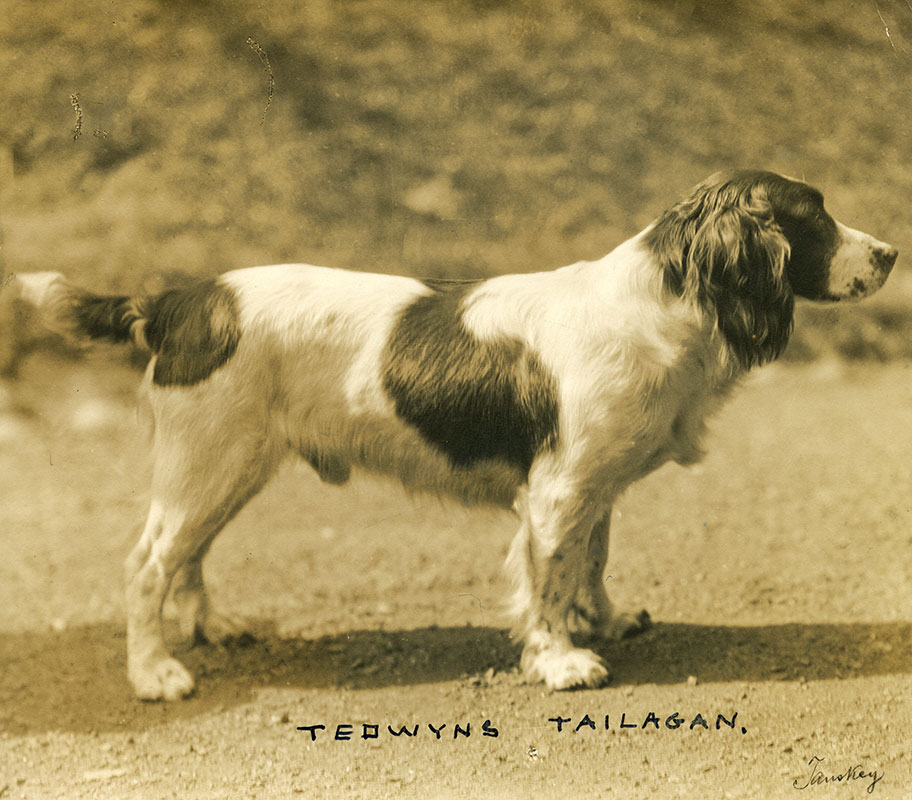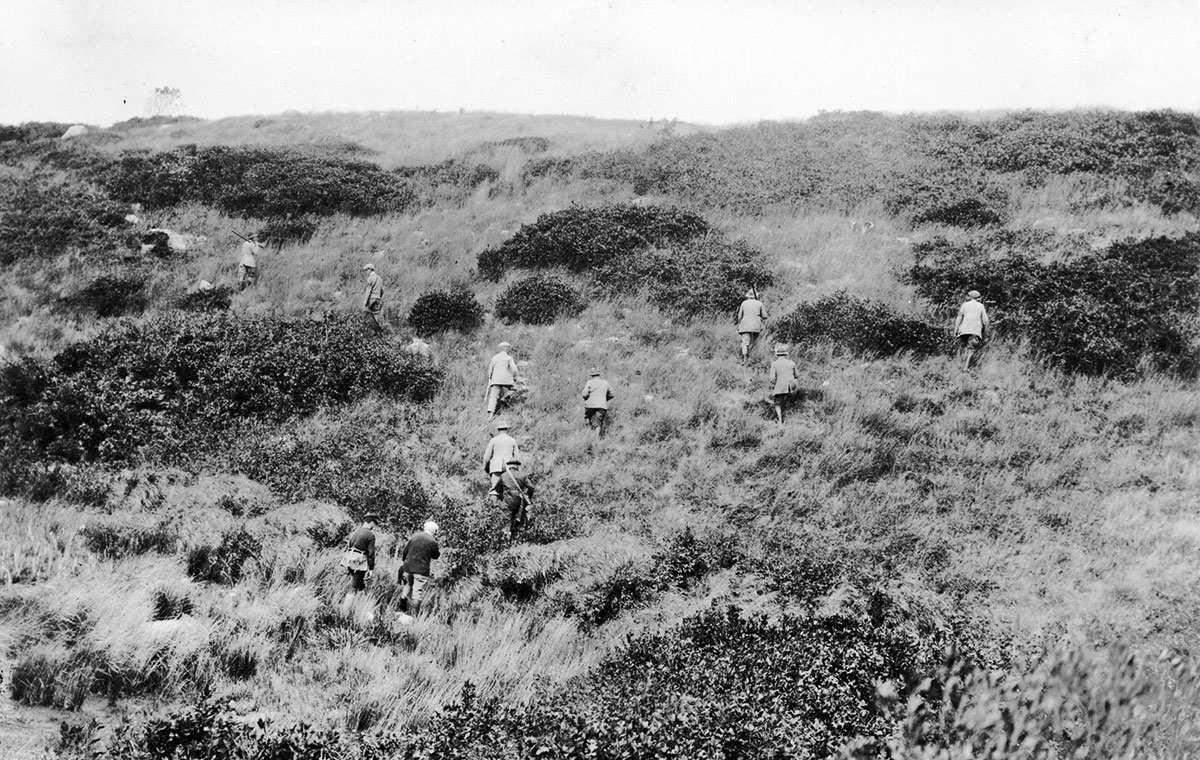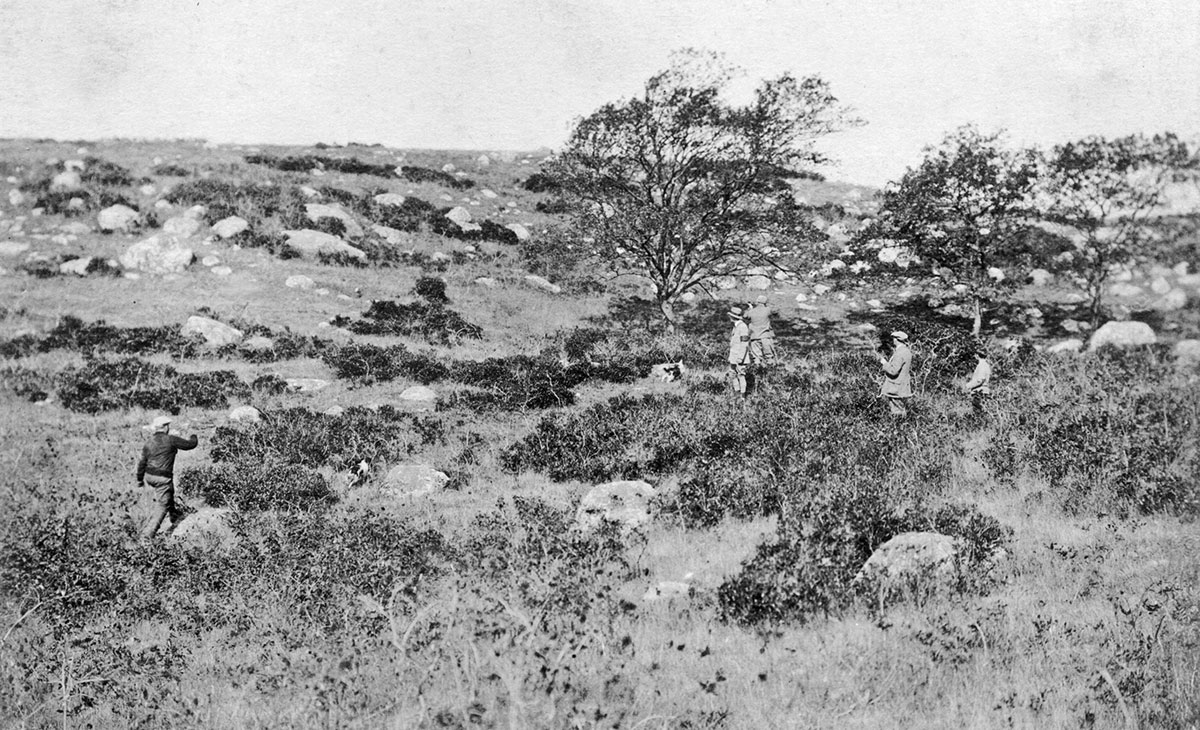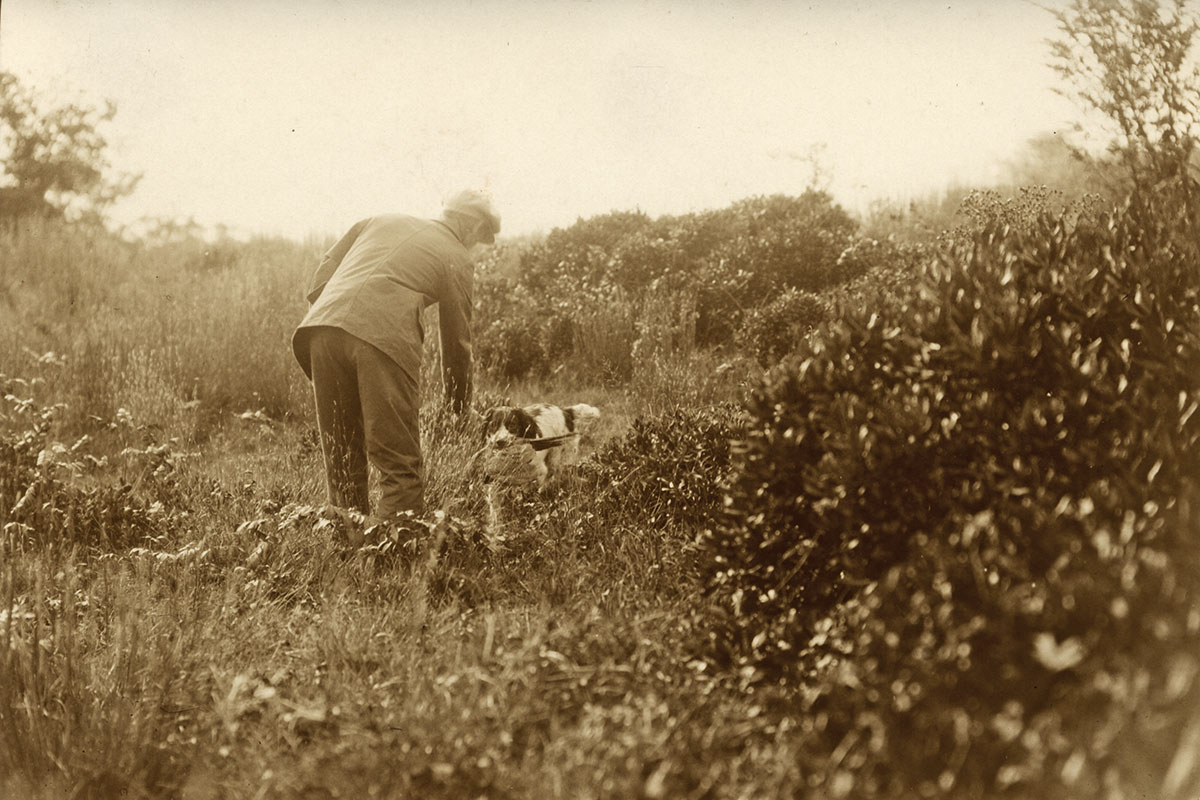2019 2ND FLOOR MAIN GALLERY
The English Springer Spaniel on Fishers Island
In the spring of 1924, during a period when Springer Spaniels were just becoming popular in America, two brothers, Walton Ferguson, Jr. and Henry L. Ferguson, sons of one of the two primary owners of Fishers Island, joined with several other prominent sportsmen to establish a breed club named the “English Springer Spaniel Field Trial Association” (ESSFTA). The club’s name reflected the founders’ desire to place great importance on field trials in the development of the breed and the promotion of standards for English Springer Spaniels. In 1926, the American Kennel Club recognized the English Springer Spaniel Field Trial Association as the parent club for the breed.
At the invitation of the Fergusons, ESSFTA staged the very first English Springer Spaniel Field trial held in the United States on Fishers Island in October 1924. The dogs were tested by sets of rigorous competitions over challenging landscape that determined winners in a range of categories. At the end of almost all of these trials, an overall field trial champion was announced. In the early years, “bench” or “conforming” competitions were also staged; however, after 1930, the focus remained exclusively on field competitions.
This exhibit celebrates the storied history of English Springer Spaniels and their field trials on Fishers Island.
A Short History of English Springer Spaniels
Histories hint that dogs of the spaniel type have populated the civilized world for many centuries. The Spaniel is thought to have originated in Spain and was perhaps introduced to ancient Britons by the Roman legions. The Spaniel was known in pre-Christian Britain, and is mentioned by name in an ancient law of Wales as early as 300 AD.
Prints and paintings from the 16th and 17th centuries show dogs of similar type to today’s English Springer Spaniel, some with docked tails. The dog was used to spring (flush) or start game, both feathered and fur bearing, for hawks, coursing hounds, and nets. The invention of the wheel lock firearm in the 17th century made “flying shooting” possible, and the Spaniel was highly successful at flushing game for this syle of hunting.
Throughout the 19th and early 20th century in Britain, smaller dogs in the same litter would be used to hunt woodcock; they were called “cockers.” Larger littermates, used to flush (or “spring”) game, were called “Springers.” The Sporting Spaniel Society of Britain decided upon the name “Springer” in 1902.
The first English Springer Spaniel in North America of any traceable lineage was imported from England to Canada in 1913. In little more than a decade, the breed had risen from the ranks of the unknown to become numbered among the most popular of breeds eleigible for American Kennel Club registration…
Excerpted from A Short History of English Springer Spaniels by ESSFTA
What is a field trial?
“It’s a sporting dog competition under actual or simulated hunting conditions, staged in a formal manner, with particular rules and standards governing the tests. Stated simply, it is a test of gun dogs in the field. Through this form of competition, sporting dog fanciers endeavor to seek out the best performers in the entire country.”
Quote from American Sporting Dogs, Eugene V. Connett, Editor, 1948.
Sportsmen and sportswomen found our east end’s varied landscape and fresh water ponds perfect for dog trials; game was no problem as birds had long been stocked for shooting purposes.
“It is beautiful country over which to run a trial. There are wide stretches of grass land as level as a prairie that encourage a dog to step out, bog lands and gorse-covered hillsides to test their courage and pools of water which enable the judges to determine the all-around capabilities of the dogs before them.”
Quote from The English Springer Spaniel Field Trial at Fishers Island “Forest and Stream” Dec. 1926
The singular event soon became an annual tradition with trials returning to Fishers Island every fall until 1948. (The only exceptions were the war years when security at Fort H.G. Wright forced a relocation to Saybrook, Conn.) After 1948, the Springer trials left Fishers Island partially because the vegetation had grown up to the point where the landscape was no longer favorable, but also because the Mansion House Hotel, home base for trial participants most years, had shuttered during World War II and never reopened. The Fishers Island Club’s “Big Club” was used for several years, but was not considered a practical substitute.
- In the field at the English Springer Spaniel Field Trials, Fishers Island, N.Y. Circa 1930. Museum Collection. The judges, the handler and the ‘Gun’ are all pictured here. Please note the flushed pheasant at center.
- Completing a retrieve at the English Springer Spaniel Field Trials, Fishers Island, N.Y. Circa 1930. Museum Collection.
- A water retrieve at Middle Farms Pond, English Springer Spaniel Field Trials, Fishers Island, N.Y. Circa 1930. Museum Collection. Please note the Ice House that once stood on Middle Farms Pond just north of today’s boat launching area.
- A water retrieve by Falcon Hill Sooty, English Springer Spaniel Field Trials, Fishers Island, N.Y. Circa 1930. Museum Collection. This Springer won the Puppy Stake at the 7th Annual Springer Trials in October 1930. Owner: H. L. Ferguson.
- English Springer Spaniel Field Trials, Fishers Island, N.Y. Date unknown. Museum Collection.
- English Springer Spaniel Field Trials, Fishers Island, N.Y. Date unknown. Museum Collection.
- English Springer Spaniel Field Trials, Fishers Island, N.Y. Date unknown. Museum Collection.
A Very Social Event
Followed by avid galleries and covered by major newspapers, Fishers Island’s field trials put the breed at the center of the sporting world for a short but glorious period each fall for more than two decades.
-
A section of the gallery, English Springer Spaniel Field Trials, Fishers Island, N.Y. Circa 1928. Museum Collection
Please note the Coast Guard officer with flag. He kept spectator’s back from handlers and ‘guns.’
- A break in the action at the English Springer Spaniel Field Trials, Fishers Island, N.Y. Circa 1928. Museum Collection.
- Socializing at the English Springer Spaniel Field Trials, Fishers Island, N.Y. Circa 1928. Museum Collection.
- More socializing at the English Springer Spaniel Field Trials, Fishers Island, N.Y. Circa 1928. Museum Collection.
- Some of the regulars at the English Springer Spaniel Field Trials, Fishers Island, N.Y. Circa 1940s. Museum Collection. (Left to right) William Sinclair, Harry I. Caesar, Dr. Samuel Milbank, and A. M. Lewis.
The Mansion House
The Mansion House Hotel functioned as the social center for the Field Trials for most of the years that the trials were held on Fishers Island. Many participants and spectators stayed there and almost all award ceremonies were staged there.
- Owners and handlers posing with their dogs at the Mansion House Hotel, Fishers Island, N.Y. Circa 1927. Museum Collection.
- Bench show at the Mansion House, Fishers Island, N.Y. Circa 1928. Museum Collection. For several years—certainly 1927 through 1930, perhaps earlier—the English Springer Spaniel Field Trial Association staged bench or “conforming” shows along with their field trials. These “Specialty Shows” were held at the Mansion House Hotel. After 1930, the Association’s bench shows appear to have been discontinued.
- The audience watching a bench show at the Mansion House Hotel, Fishers Island, N.Y. Circa 1928. Museum Collection.
- A closer view of a bench show at the Mansion House Hotel, Fishers Island, N.Y. Circa 1928. Museum Collection.
Fishers Island Champions
- Dual Trial Champion Tedwyns Trex, owned by Mr. and Mrs. Walton Ferguson, Jr., Fishers Island, N.Y. Date unknown. Museum Collection. This famous Springer was born in England in 1925 and won a field trial championship in that country and sired five field trial champions before being imported to the United States by Mr. and Mrs. Walton Ferguson, Jr. In America, he was both a field trial and bench show champion, the first Dual Trial Champion (Dual Tr. Ch.) on this continent.
- Field Trial Champion (F.T. Ch.) Fleet of Falcon Hill, owned by Mr. Henry L. Ferguson, Fishers Island, N.Y. Date unknown. Museum Collection. One of the most celebrated Springer champions of all time, Fleet won the Open All Age Stake three times: 1934, 1939 and 1943.
- F.T. Ch. Fleet of Falcon Hill after a water retrieve Circa 1934. Museum Collection. Known as fast and fearless in competition, Fleet once completed a retrieve after falling 20 feet over a sea wall and spraining a paw.
- F.T. Ch. Tedwyns Tailagan, owned by Mr. Henry L. Ferguson, Fishers Island, N.Y. Date unknown. Museum Collection. Tedwyns Tailagan was the champion English Springer Spaniel at the Fishers Island Field Trials in October 1932.
- Springer puppies at Falcon Hill, the home of Mr. and Mrs. Henry L. Ferguson, Fishers Island, N.Y. Date unknown. Museum Collection. Many competitive Springer Spaniels were bred and raised by H.L. Ferguson under the kennel name “Falcon Hill,” including several champions.
Videos
After the War
By the time the Springer trials returned in 1946 after a war-enforced exile in Saybrook, Conn., the cover on Fishers Island had grown considerably making it far more difficult for both animals and humans to cross the terrain. Almost all of the island’s farm animals had been shipped off by 1924 and the farms shut down to make room for the development of the east end as a residential colony.
There’s a hint of playing “Where’s Waldo” when searching for the Springer in two of these brush-covered landscapes.
- Field trial action, Fishers Island, N.Y., Date unknown. Museum Collection.
- Field trial action, Fishers Island, N.Y., Date unknown. Museum Collection.
- Field trial action, Fishers Island, N.Y., Date unknown. Museum Collection.
- Field trial action, Fishers Island, N.Y., Date unknown. Museum Collection.

